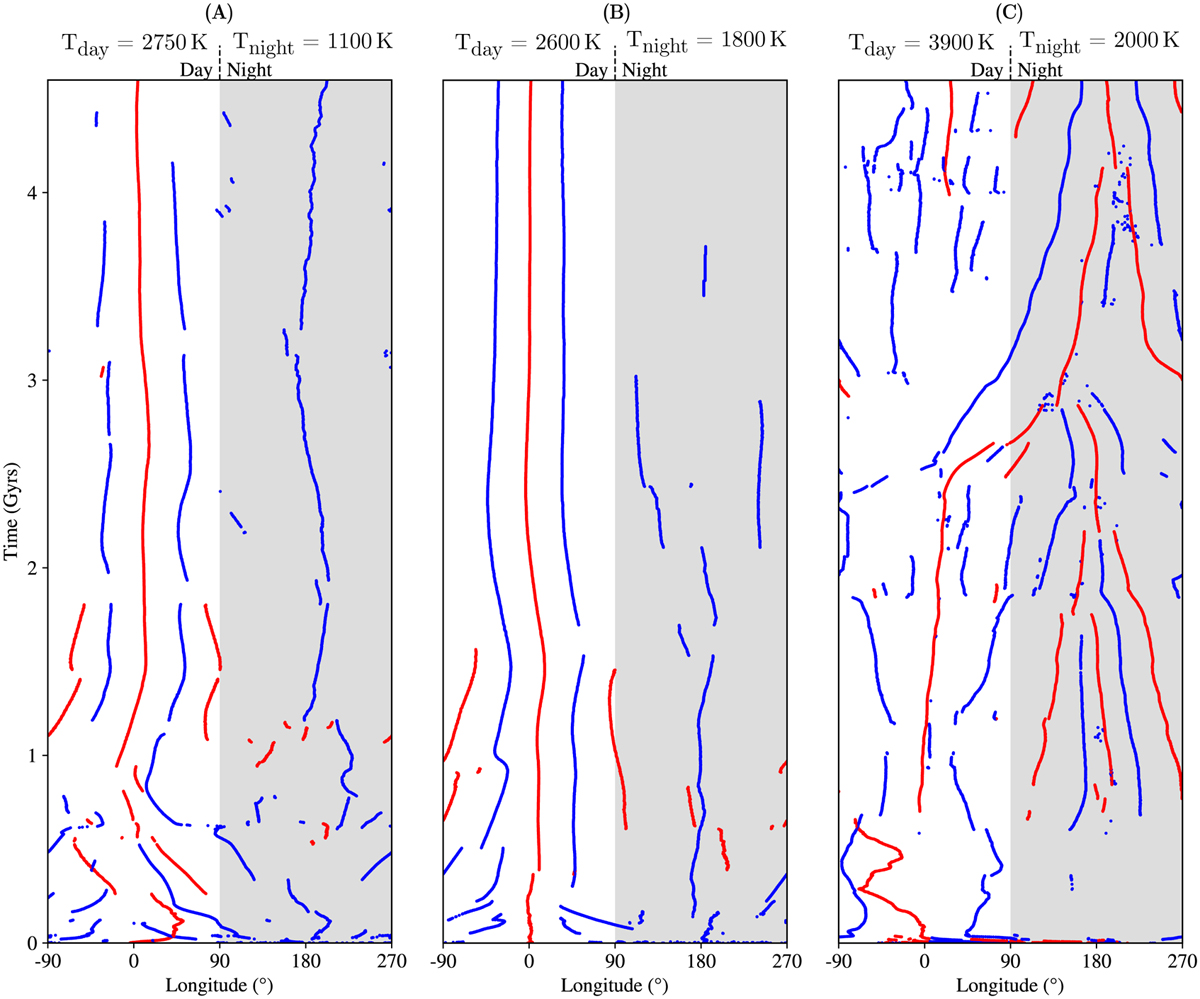Fig. 7

Download original image
Evolutionary tracks showing the longitude of upwellings (red) and downwellings (blue) as a function of time for the models with different surface temperature contrasts. The nightside is indicated in grey. If the nightside temperature remains low enough for the surface not to be fully molten, a strong upwelling preferentially occurs on the dayside (A,B). If the nightside is fully molten, upwellings form at different locations around the CMB, and some will also move towards the nightside (C).
Current usage metrics show cumulative count of Article Views (full-text article views including HTML views, PDF and ePub downloads, according to the available data) and Abstracts Views on Vision4Press platform.
Data correspond to usage on the plateform after 2015. The current usage metrics is available 48-96 hours after online publication and is updated daily on week days.
Initial download of the metrics may take a while.


